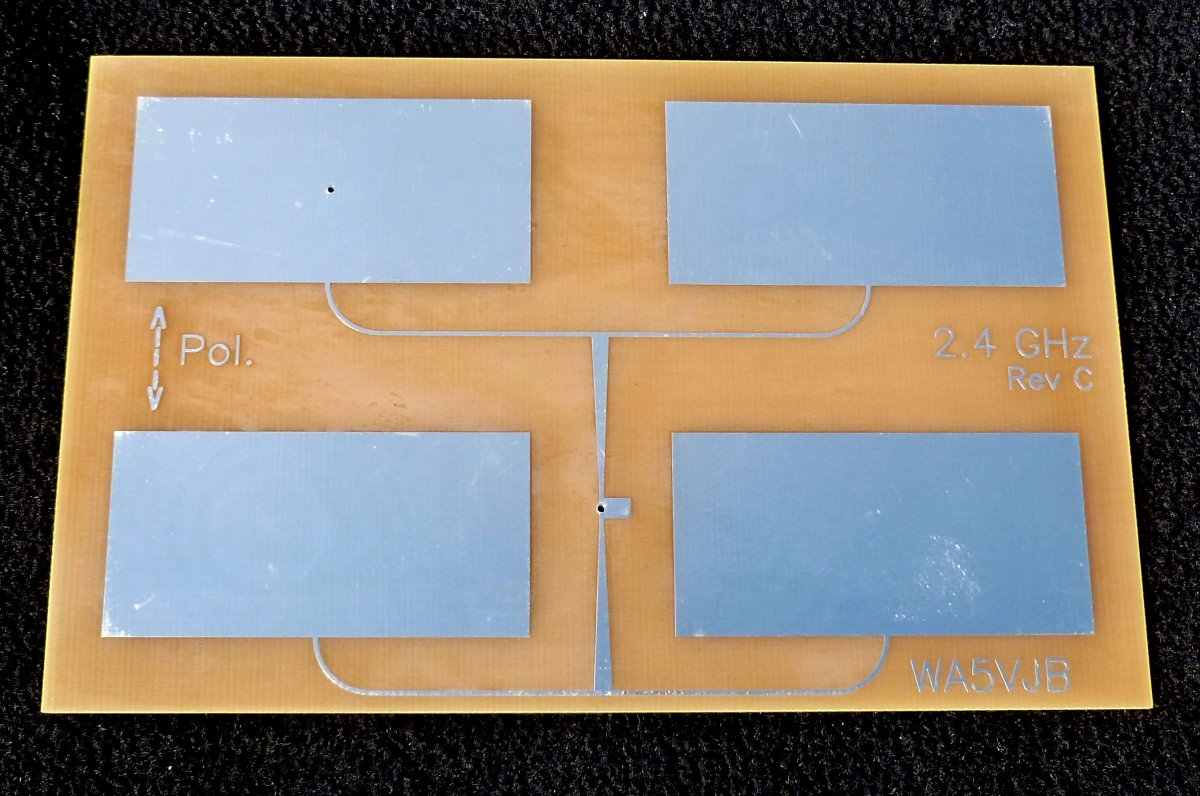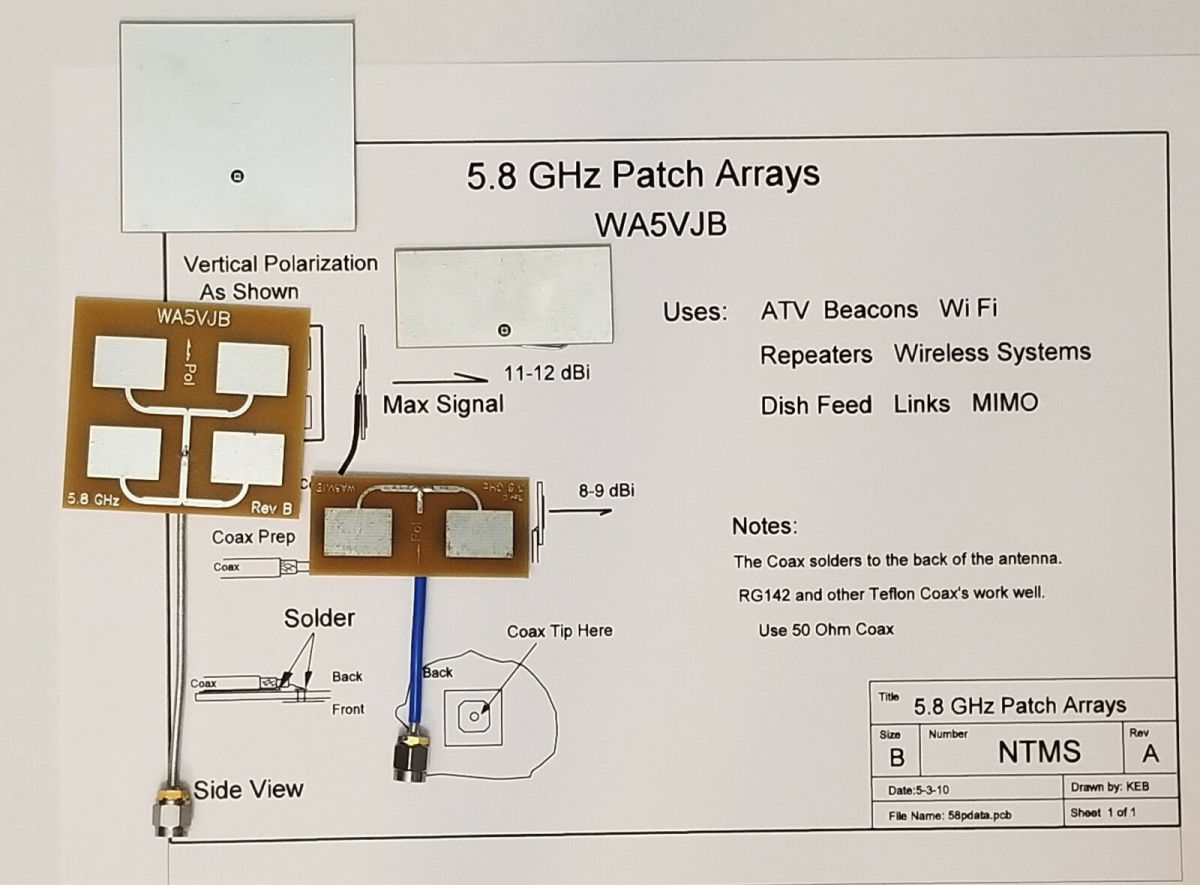Is a Quad Patch Antenna the Same Thing as a Quad Antenna?
The short answer is no. A quad patch antenna is very different form a quad antenna, a square shaped antenna similar to a loop antenna that connects to a driven element in the center of the loop. This makes quad antennas comparable to yagi antennas. And both types of antennas are often used by amateur radio operators in the HF and VHF bands.
The Benefits of Quad Patch Antennas
Patch antennas have good radiation efficiency and don’t tend to radiate harmonics and spurious signals. This is why 2.4 GHz single patch and quad patch antennas are commonly used in amateur radio satellite or Amsat and commercial satellite communication systems. A quad patch antenna generally only requires a single connection point, though dual feed versions exist. This makes the average quad patch antenna much simpler to install and use than several single patch antennas wired together. A quad patch antenna is much smaller than a comparable helical antenna. And quad patch antennas are generally printed circuit board antennas, so they have a low profile, too.
The Problems with Quad Patch Antennas
Quad patch antennas are highly directional. Furthermore, it forms almost a tight beam when you’re broadcasting. This extends the range and can reduce interference, but you need to keep your receiver in line of sight. Note that this is why quad patch antennas are often used for signal relays within buildings instead of tracking moving targets. Tamara Wilhite Designing a quad patch antenna that works right is much more difficult than designing a single patch antenna. For example, you’ll see less gain and a wider pattern with a quad patch antenna than with a 16 patch array.
Observations about Quad Patch Antennas
They have particularly high gain on narrow frequencies, making them ideal for narrow bands but unsuitable for wideband applications. They’re perfect for wifi extenders and repeaters. Tamara Wilhite Replace a simple pole antenna with a quad patch antenna, and you could extend your range by 50 percent. However, the quad patch antenna should be on the controller, not the drone or remote controlled vehicle. That needs to have an omnidirectional antenna on it. The more patches and ground plane you have, the greater the gain. This is why quad patch antennas are bigger than single patch antennas. How does this affect performance? Assuming the patches are the same size, a dual patch antenna may have a maximum signal output of 8 to 9 dBi, while a quad patch antenna would have a maximum signal of 11 to 12 dBi. This is comparable to a yagi antenna. Ironically, you’ll see this same signal output whether you’re dealing with a 2.4 GHz or 5.8 GHz quad patch antenna. You can change the polarization of a single patch antenna by changing the feed, though it can be difficult to maintain a ninety degree phase. You can’t change the polarization of a quad patch antenna. This content is accurate and true to the best of the author’s knowledge and is not meant to substitute for formal and individualized advice from a qualified professional. © 2020 Tamara Wilhite

